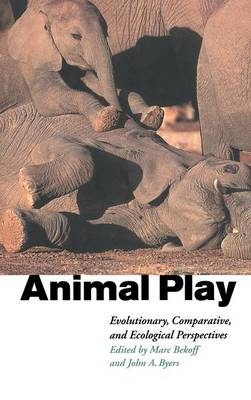
Animal Play
Cambridge University Press (Verlag)
978-0-521-58383-1 (ISBN)
Why do animals play? Play has been described in animals as diverse as reptiles, birds and mammals, so what benefits does it provide and how did it evolve? Careful, quantitative studies of social, locomotor and object play behaviour are now beginning to answer these questions and to shed light on many other aspects of both animal and human behaviour. This interdisciplinary volume, first published in 1998, brings together the major findings about play in a wide range of species including humans. Topics about play include the evolutionary history of play, play structure, function and development, and sex and individual differences. Animal Play is destined to become the benchmark volume in this subject, and will provide a source of inspiration and understanding for students and researchers in behavioural biology, neurobiology, psychology and anthropology.
1. Introduction; 2. The evolutionary origins of play revisited: lessons from turtles G. M. Burghardt; 3. Play in common ravens (Corvus corax) B. Heinrich and R. Smolker; 4. Object play by adult animals B. Heinrich and R. Smolker; 5. Kangaroos at play: play behaviour in the Macropodoidea D. M. Watson; 6. Intentional communication and social play: how and why animals negotiate and agree to play M. Bekoff and C. Allen; 7. The structure-function interface in the analysis of play fighting S. M. Pellis and V. C. Pellis; 8. Sparring as play in young pronghorn males M. N. Miller and J. A. Byers; 9. Squirrel monkey playfighting: making the case for a cognitive training hypothesis M. Biben; 10. Self assessment in juvenile play K. V. Thompson; 11. Biological effects of locomotor play: getting into shape, or something more specific? J. A. Byers; 12. Neurobiological substrates of play behaviour: glimpses into the structure and function of mammalian playfulness S. M. Siviy; 13. Play as an organizing principle: clinical evidence and personal observations S. Brown.
| Erscheint lt. Verlag | 4.6.1998 |
|---|---|
| Zusatzinfo | 8 Tables, unspecified; 5 Halftones, unspecified; 17 Line drawings, unspecified |
| Verlagsort | Cambridge |
| Sprache | englisch |
| Maße | 157 x 235 mm |
| Gewicht | 580 g |
| Themenwelt | Geisteswissenschaften ► Psychologie ► Verhaltenstherapie |
| Naturwissenschaften ► Biologie ► Evolution | |
| Naturwissenschaften ► Biologie ► Zoologie | |
| ISBN-10 | 0-521-58383-7 / 0521583837 |
| ISBN-13 | 978-0-521-58383-1 / 9780521583831 |
| Zustand | Neuware |
| Haben Sie eine Frage zum Produkt? |
aus dem Bereich


